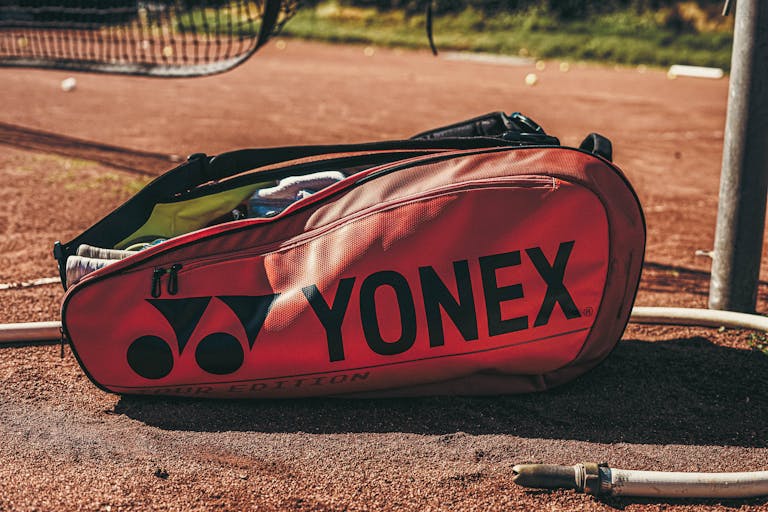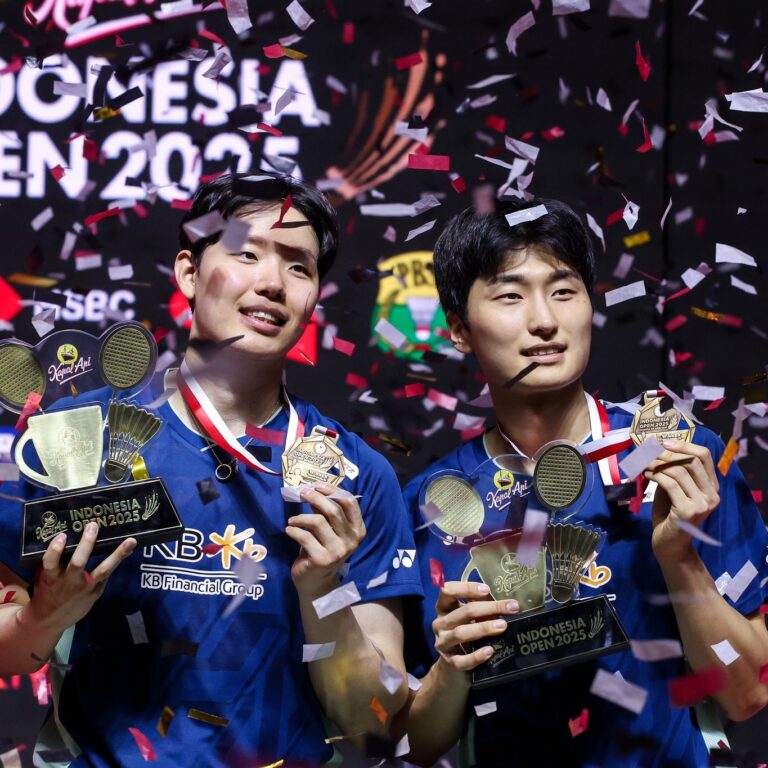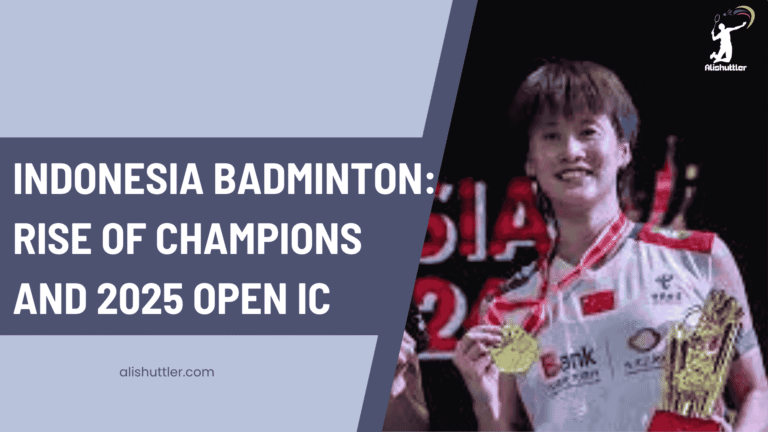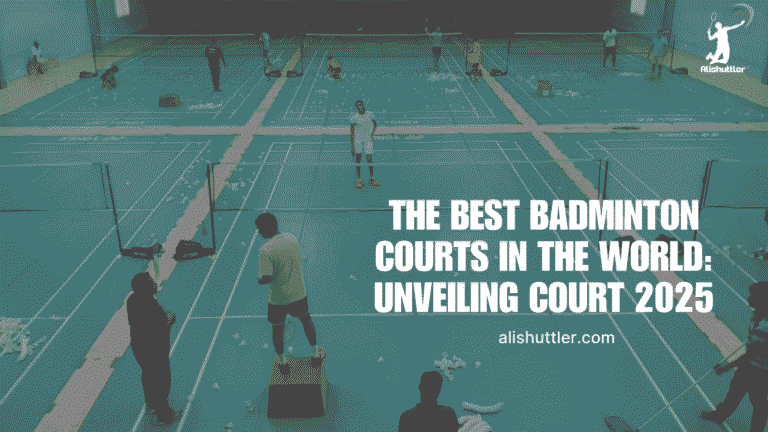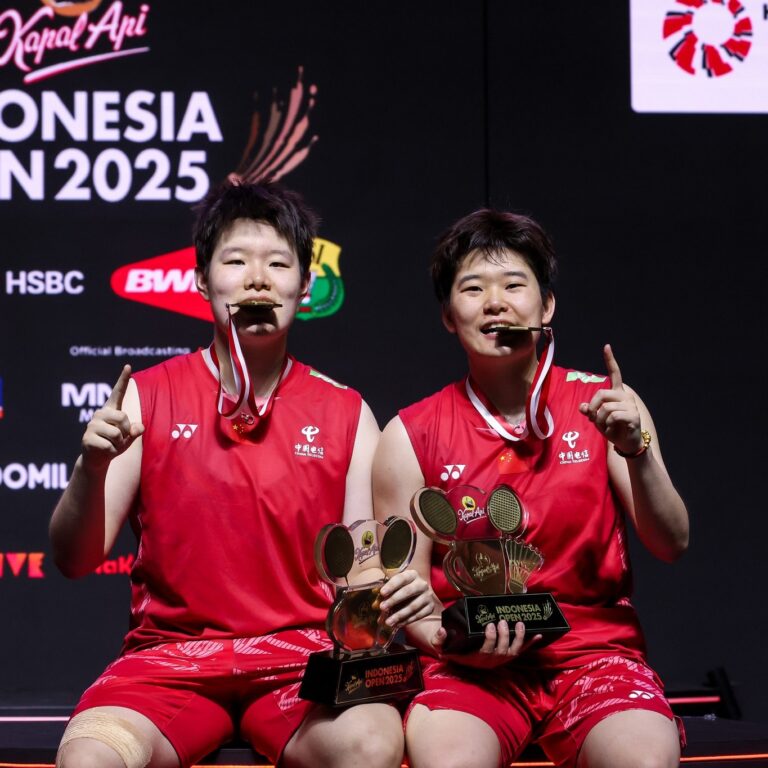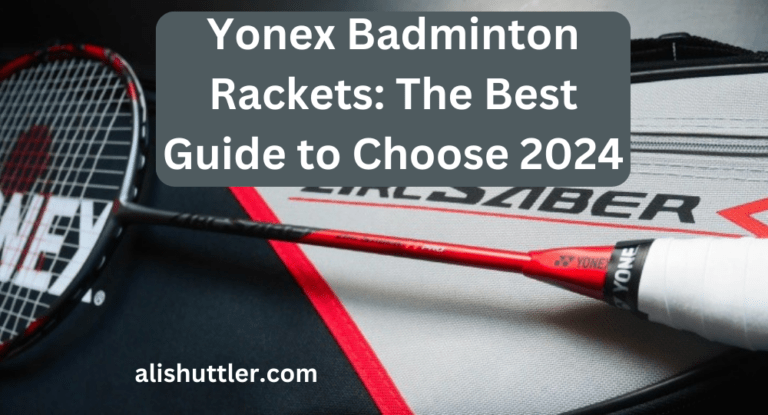Badminton lessons assist individuals in learning the correct techniques in badminton and acquire skills for entertainment and competition. They teach you about rules, footwork and how to hit the shuttlecock correctly.
Kids and adults alike can enroll in classes at gyms and clubs or even online. Trainers display easy exercises and steps to make learning easy.
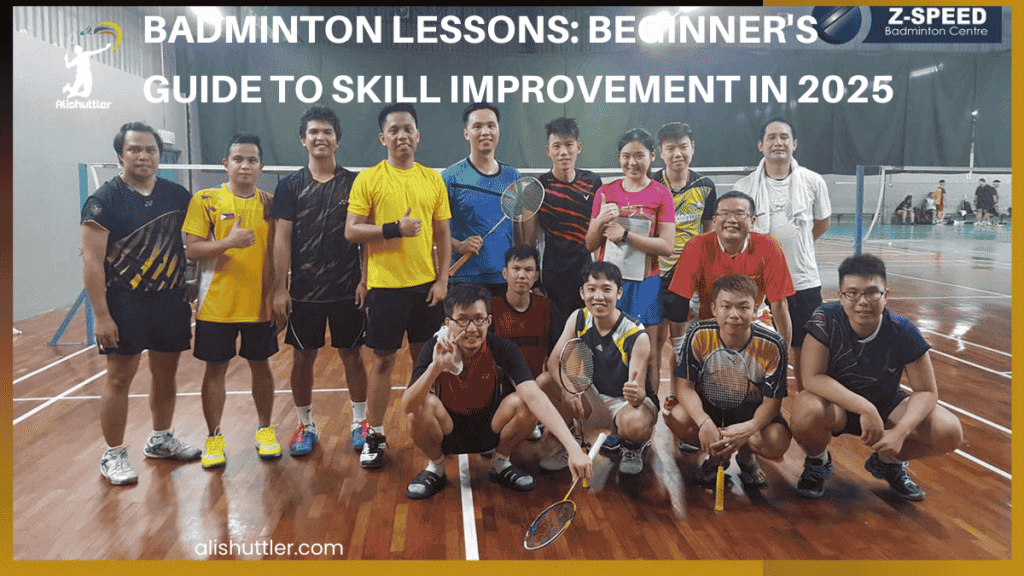
To find out more about what’s involved in badminton lessons, the section below reveals important advice and available choices.
Understanding Lessons
There are a few formats for badminton lessons, including group lessons and private lessons. Choosing the right lesson depends on individual goals, interaction styles, and the available badminton training program or studio space.
- Group Lessons: These take place in community centers, clubs or schools. Players practice with a coach, typically broken into skill level groups. Sessions emphasize teamwork, group drills, and peer-to-peer motivation.
- Private Lessons: Personal coaching sessions provide high-impact feedback. Coaches customize every lesson to your student’s strengths, weaknesses, and rate of progress.
- Online Lessons: Digital formats include video tutorials, live-streamed classes, and interactive platforms. They serve students who wish to train at home or require a more flexible schedule.
Group
Although it’s tempting to isolate yourself with your coach, participating in group lessons helps players build social skills while learning the sport. This format fosters camaraderie and motivation, as players band together and assist one another in leveling up. Coaches who can effectively flex the competitive dial will often organize small teams, allowing students to learn to play as partners, not just as rivals. This encourages everyone to think about tactics like positioning and teamwork, which are handy for doubles matches.
Collectively, the lesson plans in group training are typically organized to address a wide range of skills. Coaches often begin with basics — hitting some footwork or the underhand forehand — before progressing to more advanced techniques. Some drills may operate on one side of the net to minimize injury concerns and maintain organization.
Common feedback is provided as peers and coaches identify the hits and what’s broken, so all gain from diverse input. Such an approach can make the learning process less intimidating and more enjoyable, particularly for complete beginners in the badminton training program.
Private
Private lessons provide one-on-one attention from a coach, who can customize drills to the student’s requirements. Lessons emphasize fundamentals such as correct grip, the overhand forehand swing, and safe footwork. Coaches might devote extra time to trouble spots — like the perfect backhand grip or lunge technique to prevent ankle twists.
Scheduling is adjustable, allowing students to accommodate sessions into hectic lifestyles. A lot of people opt for private lessons to address targeted areas of weakness, or to get their playing to the next level, more quickly. Because of this, the intimate coach-student connection creates a more reactive and comfortable learning environment, and this can accelerate your improvement.
Online
Web lessons are becoming popular for their flexibility and reach. Students are provided with access to a vast video library and resources, ranging from slow-mo swing or footwork breakdowns. Interactive services provide immediate feedback, and some even provide live video analysis or chat assistance.
Virtual group sessions, linking students across regions, are available. This injects a social aspect, even when you’re training remotely. Advancement can be followed via online tests or customized courses, keeping students on course.
The Five Skills
Knowing the five fundamental skills in badminton is essential for anyone who wants to play well and have fun. Each skill—grip, stance, footwork, strokes, and serve—sets the foundation for powerful play and smarter tactics.
Players that train these fundamentals gain confidence, ascend to harder skills quicker, and experience actual improvement in games. Regular training in these areas is the most reasonable path toward developing a rock-solid playing style that scales to any level.
1. Grip
Getting the grip right is step one in badminton. Begin with the fundamental forehand grip, curling your fingers around the handle and resting your thumb loosely along the side.
This grip ensures you command of the racket and assists with shot precision. Adopt a backhand grip for shots on your non-dominant side by positioning your thumb against the racket’s flat side.
Rotating grips in play is standard—altering between forehand and backhand grips allows you to drive shots from unique angles. Experiment with your grip and you’ll see it influences shuttle trajectory and your ability to vary swing speed.
Working on grip changes during drills keeps you loose and prepared for any shot.
2. Stance
Badminton stance primes you for success. Get into a low, athletic position with your knees bent and your weight on your toes.
This allows you to go fast in any direction. Keep your racket hand bent and raised behind your head when waiting for a shot.
Correct foot positioning is key to remaining balanced and reaching the shuttle quickly. A solid position enables you to manage your rival’s returns and transition from defense to offense seamlessly.
Working on transitioning between stances improves your court coverage and keeps you in rally shape.
3. Footwork
Footwork is what allows you to get in position for every shot. Signature moves such as forward lunges, side shuffles, and lightning quick steps backwards are essential.
Landing on your heel and pointing your toes toward where you’re going reduces the chance of injury. Drills that work lateral and diagonal movement, speed, and coordination develop muscle memory.
Good footwork connects your hands and racket swings, creating better shots. Players who move well tend to come out ahead, reaching the shuttle first and striking it with greater precision.
4. Strokes
There are several main strokes in badminton: forehand, backhand, and overhead. There’s a stroke for every occasion—forehand for the majority of clears, backhand for returns, and overheads for smashes/drops.
Drills that jumble these strokes together assist you in discovering rhythm and consistency. Emphasizing technique and shot placement develops precision and strength.
Or, if you’re feeling bold, attempt drills that alternate between strokes to get you ready for any match situation and boost your all-around game.
5. Serve
The serve initiates each rally and has the potential to dictate the tempo for the point. Learn the high serve to drive your opponent back, the low serve to keep him guessing, and the flick serve to surprise.
Practice hitting different areas of the service box. Serve-focused drills not only let you practice under pressure, but add variety to your game.
A strong serve counts, putting you ahead right from the start of every rally.
Beginner’s Path
Those initial months on badminton count. Early gains in rhythm dictate gains in enjoyment later. Developing a foundation is the most effective approach to cultivate abilities, increase confidence and maintain motivation.
Nothing cures beginner overwhelm like a defined path with easy steps, consistent practice and frequent feedback to help new players improve quickly and remain excited about learning.
Master Basics
Grips, grips, grips. The neutral grip is a good holding for the racket. It empowers new players and allows them to experiment with a lot of shots without stress, especially during group lessons. Coaches tend to demonstrate how to modify the grip for other strokes down the road, but beginning bare knuckle is helpful.
The second is footwork. Fundamental footwork such as the split step, side-step, and chasse assist players in closing down the shuttle more rapidly. Good footwork allows beginners to set up for shots and holds them firm through rallies, which is crucial in a badminton training program.
Straight drops and smashes are examples of overhead shot drills that are handy to begin with. These moves teach players to use their arms and body in unison, not just the wrist. Coaches introduce around-the-head shots and easy backhands pretty early.
Mastering when to play these strokes and when to change grips simplifies the game. Drives and netshots get added next. Both require their own special grips and timing, so beginning with slow drills and coach feedback is a good place to start.
Repeat. Doing the fundamentals RIGHT over and over and over again helps muscles remember what to do. Better to do less things well than everything at once.
Practice Drills
- Shadow footwork: move across the court without a shuttle, focusing on split steps and direction changes.
- Target hitting: aim for marks on the court using overhead and net shots.
- Net kill races: compete to see who can reach and tap shuttles at the net first.
- Drive rallies: players hit flat shots back and forth, trying to keep the shuttle low and fast.
- Serve accuracy: practice hitting to different spots in the opponent’s court.
Consistent practice, on the order of at least twice a week, assists habits and stamina. Short, intense drills keep practice alive and avoid boredom.
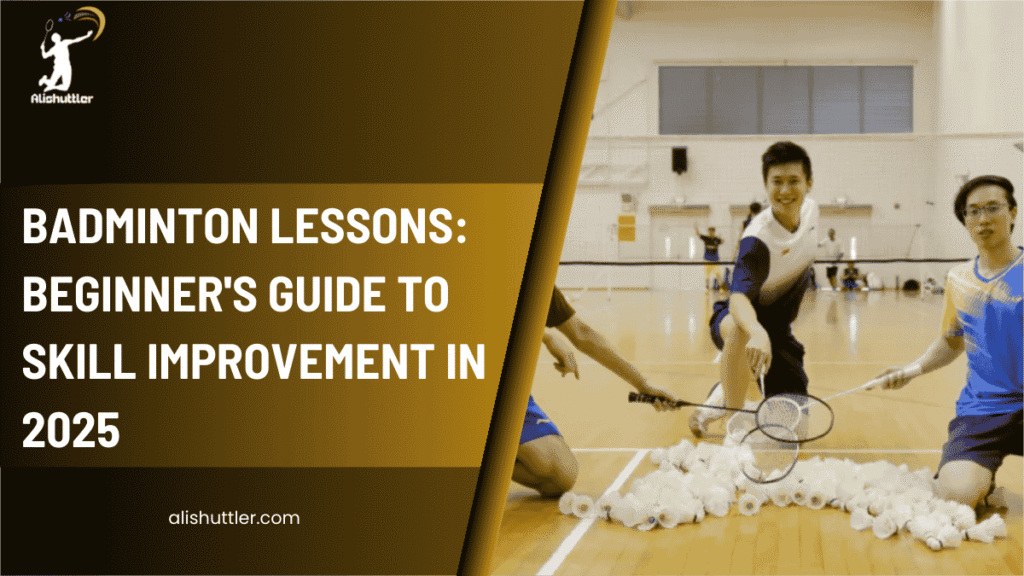
Measuring achievements like tallying made shots or timing rallies gives players gamify helps them visualize their progress. This criticism is crucial for inspiration and consistent progress.
Play Games
Friendlies are an opportunity to stress test new abilities. Playing singles or doubles, beginners figure out how to move, respond, and decide in real matches.
Doubles matches develop collaboration and instruct athletes to communicate and strategize as a group. Observing and analyzing games assists find strong points and areas for improvement.
Observing what works, and what doesn’t, directs future practice. They’re social games. Making friends and playing in teams makes practice more enjoyable and keeps players returning.
Beyond Technique
Good badminton is about more than powerful smashes and accurate serves. The game requires a clear mind and a prepared body, combining quickness, cleverness, and flexibility. Players must shift strategies on the fly, decode the rhythm of play, and maintain their composure as it heats up.
Mastering these aspects is about more than just drills and form. Instead, attention turns to the mind and how players perceive and respond to the game, particularly as badminton’s lightning-quick pace and global spread demands a contemporary, holistic approach.
Mental Game
A good attitude is extremely important in badminton, where matches can turn on a single rally. Being confident allows players to bounce back from errors and play big during big rallies. Visualization is another important tool.
When players visualize winning shots or points, it primes their brain and body to reproduce those actions during actual match pressure. Stress management matters. What separates good players from great is the ability to remain calm and decide clearly, even during long punishing rallies.
Mindfulness exercises, such as easy breathing exercises or brief interludes of focus prior to each serve, assist in honing concentration. These habits help you more easily block out distractions and sustain focus on every shot, particularly when the stakes are high.
Court Vision
Court vision is about more than catching a glimpse of the shuttle. That means being aware of your position, your partner’s position in doubles, and where your opponent is likely to hit next. Being observant for subtle clues, such as a change in an opponent’s position or racket angle, can provide indications regarding their upcoming action.
They should drill scanning the court rapidly. This allows them to identify gaps and intelligently select shot placement. Good court vision is being a step ahead — moving before the shuttle even leaves an opponent’s racket.
Drills with quick direction changes or responding to a coach’s cues can increase reaction time and situational awareness. These abilities allow players to cover more court, position themselves for winners, and handle the intensity of singles and doubles matches.
Deception
Trickery is a huge component of contemporary badminton training programs. Players employ concealed strokes, such as holding the racket longer or shifting grip at the last second, to confuse their strokes and make their shots less transparent. Mixing up shot angles and speeds during group lessons keeps opponents guessing and frequently results in weak returns.
Incorporating fake cuts into drills develops deceivingness, especially in private lessons where personalized feedback is given. For instance, a smasher may fake a smash, then drop the shuttle just over the net. Game tape can demonstrate when and how to employ deception — for example, after a fast drive string or when an opponent is temporarily out of position.
Minor adjustments can have major impact–particularly at advanced levels where points are hard fought.
Choosing a Coach
Finding the right coach is essential for anyone aiming to take consistent steps forward in badminton training programs. A good coach isn’t just about teaching strokes; they’re about helping shape skills, mindsets, and habits that last, including tactical strokes and proper grip techniques. Experience, teaching style, and personal connection are what matters to me, while cost and reputation are just a piece of the puzzle.
| Factor | What it Means | Why it Matters | Example/Detail |
|---|---|---|---|
| Experience | Years coaching, player development | Shows skill in guiding improvement | Knows how to spot and fix footwork problems |
| Credentials | Certifications, tournament background | Signals technical knowledge | Former national player, holds coaching license |
| Teaching Style | How lessons are led, approach to skills | Affects learning and engagement | Uses drills, gives verbal feedback, patient |
| Compatibility | Personal rapport, communication | Builds trust, fosters progress | Encourages, listens to goals, adapts feedback |
Credentials
A coach’s background offers insights into their ability and commitment, especially in a structured badminton training program. It’s beneficial to check their qualifications and inquire about their experience with players participating in national or international tournaments, as they often possess strong technical knowledge and can identify crucial specifics, such as footwork mistakes. Many coaches also engage in group lessons at local clubs, where practical experience can be just as valuable.
Talking to alumni can provide you with information about the coach’s instructional methods, their willingness to invest extra time when needed, and how they tailor training sessions to meet individual goals. References from local badminton associations can help you find an instructor who is not only talented but also dedicated to skill development and sportsmanship.
Inquiring about their experience with various skill levels, from complete beginners to competitive players, can be crucial. A good coach will adapt their curriculum to include applicable badminton terminologies and strategies, ensuring that every player receives the attention they need for improvement and success in tournaments.
Philosophy
Knowing a coach’s philosophy sets expectations for learning and progress. Some coaches emphasize strong fundamentals, such as footwork and racket technique, and others are more likely to stress early competition or team play. Pose direct questions–does the coach emphasize discipline, or do they mix skill-building with fun?
This is relevant if you desire a playful educational ambiance or a strict regimen. If your plan is to play in tournaments, you might prefer a coach who’s prepared players for competition. If you prioritize wellness or social play, a coach who emphasizes holistic growth and sportsmanship will fit better.
Aligned in values makes training feel rewarding.
Compatibility for Badminton Lessons
Begin by sitting down with, or even auditioning, potential coaches. How they describe skill and provide feedback can make or break your learning. Certain students require specific, stepwise instructions, others like brief hacks and rapid adjustments.
Patient coaches and clear talkers put students at ease so they’re less intimidated to open up about their worries and pose questions. It’s important to observe how the coach engages with others during class. Do they provide encouragement? Are they accessible when you require additional assistance?
Trust is earned, but begins with open, reciprocal communication.
Self-Improvement
Self-improvement in Badminton Lessons is inspired by both physical and mental development. It means skills, goals, and review to cultivate a foundation for lifelong learning. This emphasis not only enhances game performance but aids in achieving equilibrium in life.
Studies demonstrate that consistent exercise, such as Badminton Lessons, provides physiological, psychological, and social advantages. Improvement is not just a skill; it’s the discipline of application, the growth mindset, and the tool to quantify change.
| Training Method | Example Activities | Personal Goals | Reflective Practices |
|---|---|---|---|
| Solo Drills | Shadow swings, footwork exercises, wall shots | Improve accuracy, increase speed | Self-assessment, tracking technique changes |
| Video Analysis | Record sessions, use slow-motion playback | Identify weak shots, reduce errors | Feedback from coach, review past footage |
| Physical Fitness | Strength training, agility drills, flexibility stretches | Boost endurance, prevent injuries | Monitor heart rate, fitness tests |
Solo Drills
Shadow swings are essential for building muscle memory and improving technique, especially when incorporated into a Badminton Lessons training program. Incorporating footwork exercises enhances speed and balance, crucial for executing effective shots like the forehand drive. Practicing shot forms and movement paths in open spaces can also help players refine their skills, making it easier to track progress and identify areas for improvement.
Many players benefit from solo drills that focus on specific skills, such as footwork patterns, which are vital for both defense and offense in the Badminton Lessons and games. Keeping track of improvements through notes or light self-testing can highlight significant advancements over time. Setting small, achievable goals like landing 10 shots in a row makes practice more engaging and rewarding.
Incorporating these strategies into your training sessions can lead to better performance in tournaments participation. By focusing on individual goals and refining techniques, players can enhance their overall game strategies and enjoy the process of skill development.
Video Analysis
Filming yourself in matches or practice provides a transparent, objective perspective on your technique and movement. Reviewing video in slow motion aids in identifying habits or mistakes that would otherwise pass unnoticed during play. Armed with a smartphone or camera, this process is accessible to anyone, not just professionals.
They even have apps and free tools that allow you to highlight and compare important moments. If you send these clips to a coach or an experienced player, it provides external feedback, offering a fresh perspective. Adjusting training based on what you observe or hear can eliminate skill gaps more quickly.
As the years pass, juxtaposing old and new clips makes progress and its accompanying new targets palpably easy to visualize.
Physical Fitness
Sports such as Badminton Lessons require a combination of quickness and endurance, making a dedicated badminton training program essential. Strength routines, even just bodyweight moves, help prevent injuries while enhancing skill development. Mobility training keeps joints and muscles primed for quick shifts on the court, essential for executing tactical strokes during matches.
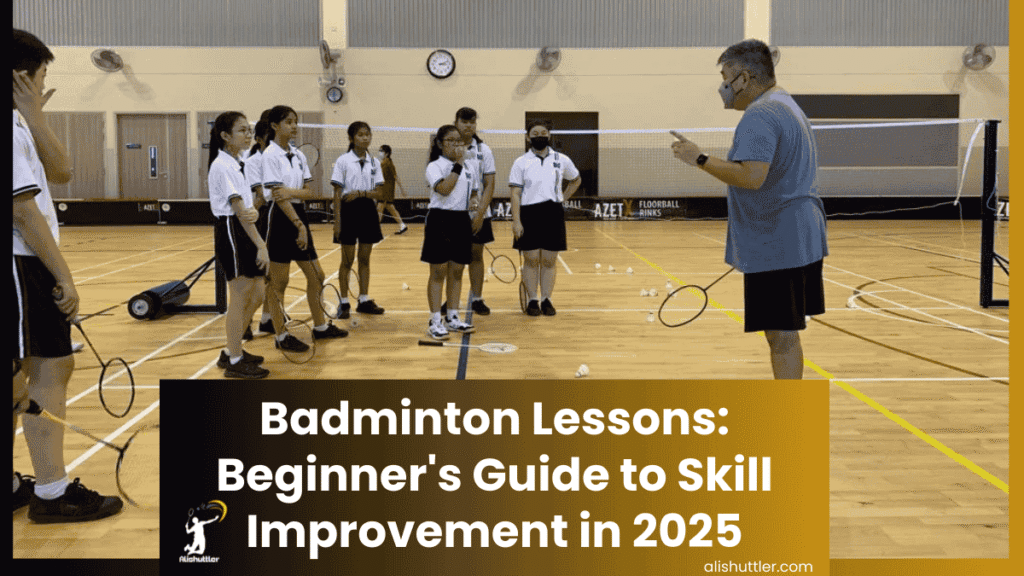
Agility drills, such as ladder runs or shuttle sprints, can increase foot speed and are crucial for competitive players. These moves connect nicely to actual match play and facilitate improved court coverage, which is vital for success in tournaments participation.
Monitor your progress with easy fitness tests or a heart rate monitor. Results from these checks indicate whether your training is effective or if adjustments are necessary. This feedback keeps motivation high and ensures that your training sessions align with your individual goals.
Final Thoughts on Badminton Lessons
Hone grip, footwork and swing with every class. I had a good coach who gave me clear feedback and kept the drills fun. These small wins, such as nailing a clean serve or a fast net shot, increase motivation quickly. It’s regular practice and defined objectives that fuel growth, not cool tricks. Step-by-step new skills, from first swing to fast rallies.
You can get started, get better and get your groove on. If you want to take your lessons seriously, join your local club or find a good coach in your city. Take a tee, new faces and find out how far you can go on the court.
Frequently Asked Questions
What are the benefits of taking badminton lessons?
Badminton lessons, whether through private lessons or group training, teach essential techniques, enhance skill development, and help avoid injuries while ensuring proper grip.
Which basic skills do beginners learn in badminton lessons?
Beginners learn five key skills: proper grip, footwork, serving, clearing, and smashing, which are essential for skill development in badminton training programs and boost player confidence on the court.
How do I choose the right badminton coach?
Search for a qualified coach who has taught group lessons for beginners before. Great coaches explain, encourage, and motivate during badminton training programs.
Do I need special equipment for badminton lessons?
A simple racket, some good sports clothes, and non-marking court shoes are typically sufficient for participants in a badminton training program. A few coaches will loan out rackets and shuttlecocks to complete beginners.
How often should I attend badminton lessons to see improvement?
One or two group lessons per week is great. Therefore, practicing regularly between training sessions reinforces new skills and accelerates progress.
Can adults start badminton lessons with no experience?
Indeed, people of any age or fitness can take up beginner badminton lessons, as coaches tailor group lessons to fit your skill level and individual goals.
What skills go beyond technique in badminton lessons?
They even offer advanced lessons focusing on game strategies, teamwork, and tactical strokes, which help players improve their skills and enjoy the badminton game even more.
